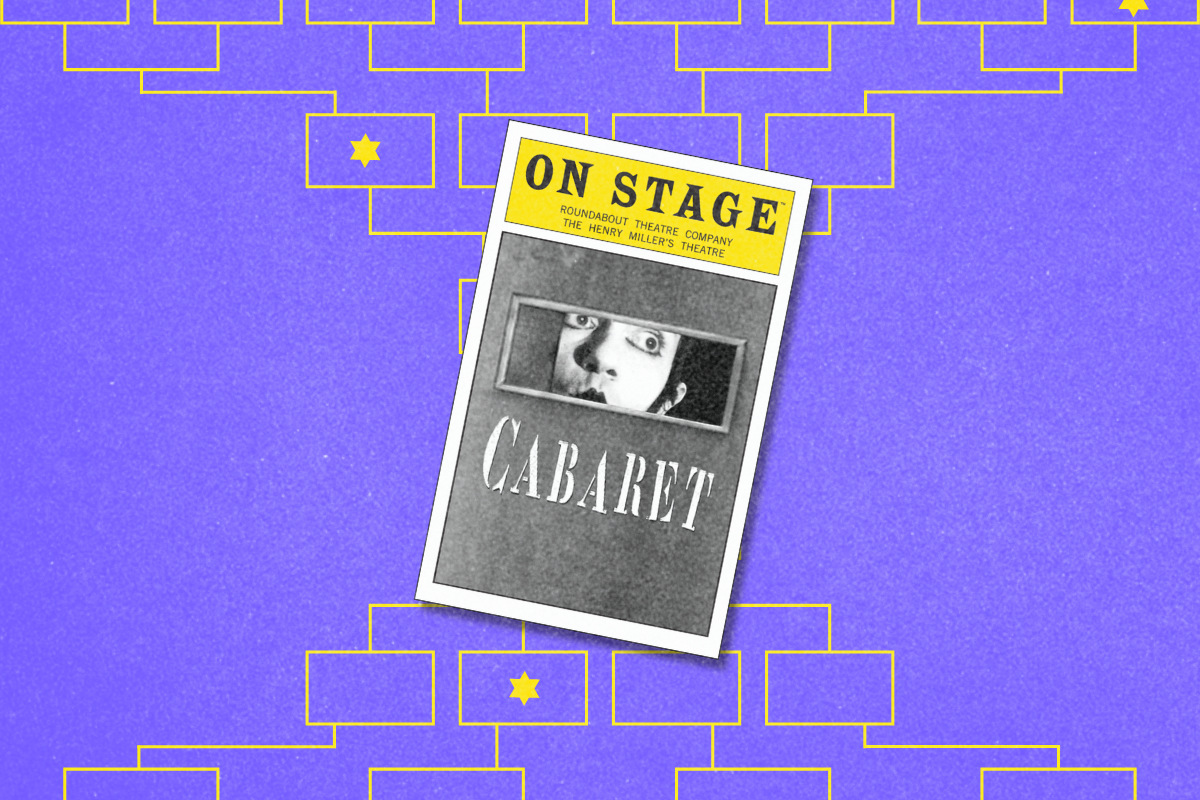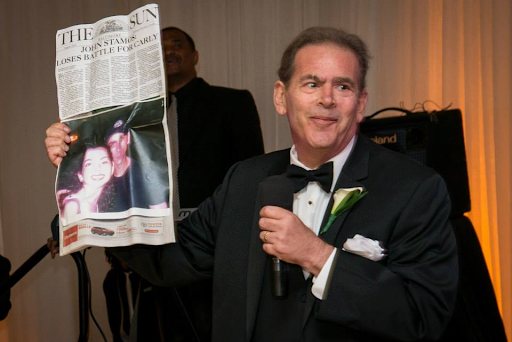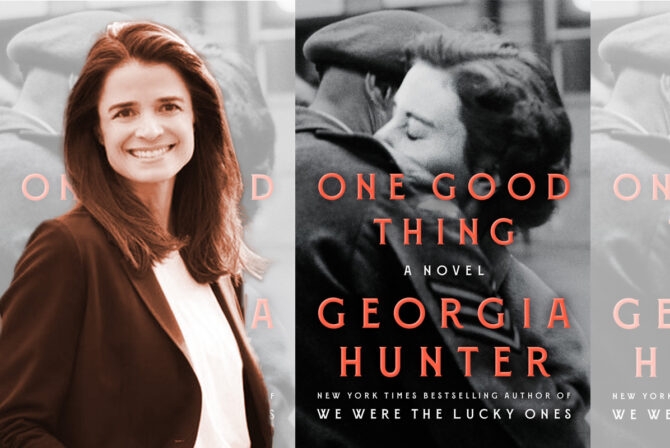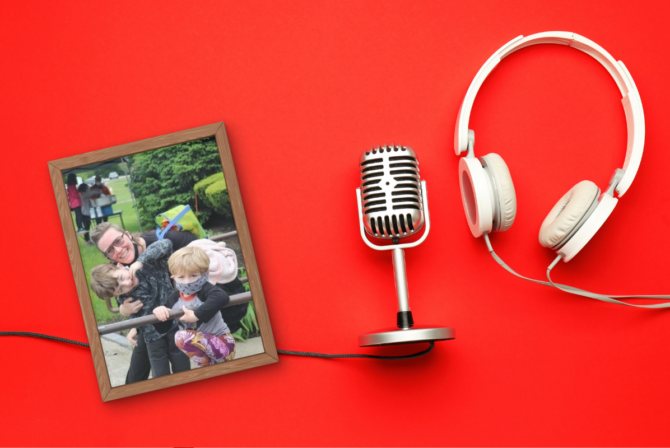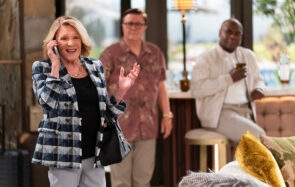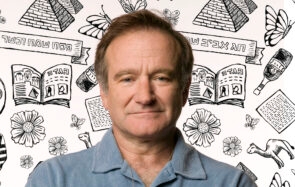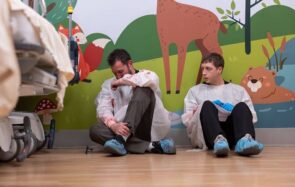The circumstances of my meeting John Stamos in the summer of 2002 are murky. But I have the photographic evidence to prove it.
My friend Meaghan and I were two bunheads living in the Baltimore suburbs. We would often take the “Bubbe Bus,” as it was known, up to NYC and do all kinds of things, like taking another bus to New Jersey on New Year’s Eve for a house party or eating zero calorie frozen yogurt. It was a different time.
A friend of a friend was working at Studio 54 — that famed ‘70s night club turned into Broadway theater — where a rotating stunt cast of characters were starring in a Sam Mendes production of the musical “Cabaret.” Allegedly, the theater needed volunteer ushers for the performances, and Meaghan and I were just the nerds to do it.
We were pumped for this opportunity for one reason and one reason only: John Stamos. Uncle Jesse was playing the Emcee and as children of the ‘90s, our DNA was imprinted with adoration. Have mercy!
Because fire hazards didn’t exist in the 2000s, after we were done “ushering” we were allowed to sit in the aisle and watch the show.
From the first drumroll, I was captivated — and not just by John Stamos’ bare ass almost directly in my face (it was a good choice to sit stage left!). While I hadn’t previously been that interested in the underbelly of Weimar-era Berlin, the intensity of the entire production seemed to vibrate through my bones and stamp itself on my DNA, maybe only a couple rungs away from Uncle Jesse on the double helix.
Afterward, Meaghan and I waited for Mr. Stamos at the stage door and the infamous photo was snapped. John Stamos in his black baseball cap and black nails, with his arm around little ol’ me. I was so obsessed with it, the photo became a family joke, a mainstay as I grew up.
Was it framed in my room? Yes.
Was it in my senior yearbook with the caption “After seeing ‘Cabaret’ on Broadway, Carly Hamburger bumps into the ‘love of her life’ John Stamos by the stage door?” Yes.
Was it my first ever Facebook profile picture? Yes.
Was it displayed at my wedding? YES. My father created a fake front page newspaper story featuring the photo with the headline “John Stamos Loses Battle for Carly,” which he proudly held up during his speech.
So maybe John Stamos had something to do with my newfound obsession with “Cabaret,” but there might have been a bit more to it than that.
My paternal grandparents were both German, and I knew from a young age that my grandfather boarded a boat to America at 13 without his parents. At some point, I suppose I was wise enough to infer that meant he was escaping the Nazis. I also knew my grandfather had a brother who perished during the Holocaust, with whom my father shared a name. But I didn’t know much else.
My grandparents walked the line so many German Jews assimilating in America did at that time. Sauerkraut? Good. German cars? Bad. Bits and bobs of German culture permeated our house and my grandparents’ house. But there was no open conversation about the Holocaust.
Still, I couldn’t escape my German roots, no matter how many German cars we didn’t buy. My last name was Hamburger. The years of teasing! When I got married, I couldn’t wait to unload my German last name. See ya, McDonald’s jokes! Hello, new life.
And then my dad died. Our small Hamburger family suddenly seemed a lot smaller and I realized my connection to our German heritage was teetering on nonexistent. I felt a compulsion to connect to a part of myself I’d tried to bury for so long.
Every day for a year I poured over genealogical websites, tracking down the fate of every Hamburger relative from the past 200 years. I vacillated between feeling grateful for the existence of the fastidious records and gutted by the reasoning. Whenever I felt fatigued or just plain sad, I felt a presence telling me to keep going. I did, and somehow, it led me back to “Cabaret.”
You see, one of the German records websites noted that a relative of mine married Kurt Weill’s sister, Ruth. Kurt Weill was a German-American composer, perhaps most famous for his musical “Threepenny Opera” and the song “Mack the Knife.” Cool fact, I thought. Moving on. Let’s find some cousins!
Through Ruth Weill’s lineage, I connected with three cousins around my age. When I got on the phone with one of them (named Ruth after Ruth Weill), it felt like I had known her my entire life. I started to learn more about her side of the family’s escape from Germany (their success likely due in no small part to Kurt’s success in America) and I learned more about Kurt, even eventually traveling with relatives to the Kurt Weill Foundation in New York.
It was there I learned about the influence of Kurt’s music on the theater world, including on — you guessed it — “Cabaret.” Kander and Ebb’s score is considered by some to be inspired by Weill’s music, and in 1966, Kurt’s widow, Lotte Lenya, originated the role of Fräulein Schneider in the Broadway cast of “Cabaret.” So when I heard about the 2024 “Cabaret” revival hitting Broadway, I knew I had to see it with my newfound cousin Ruth.
My beloved John Stamos was nowhere to be seen in this production, replaced by a grittier and truly terrifying Eddie Redmayne as the Emcee. The show was captivating. I was entranced by Redmayne’s serpentine movements slowly drawing the audience into his circus.
During intermission, I met up with an old friend whom I first met on a trip to Israel together in 2010. As soon as I saw her, I unexpectedly collapsed into tears in her arms, repeating, “It’s just a lot.” And it was. The first act of “Cabaret” is positively joyful, but those of us familiar with history know how it all ends. Watching the first act with a long lost relative after almost two years of intense Holocaust research in the wake of October 7 accompanied by a friend I met on a Jewish heritage trip to Israel? It was Jewish trauma overload.
Gone were the days of enjoying John Stamos’ bare tush at Studio 54. What felt like escapism 20 years ago, hit far too close to home now. I had changed. The world had changed, yet not at all. I just hope I’m not watching the first act.
